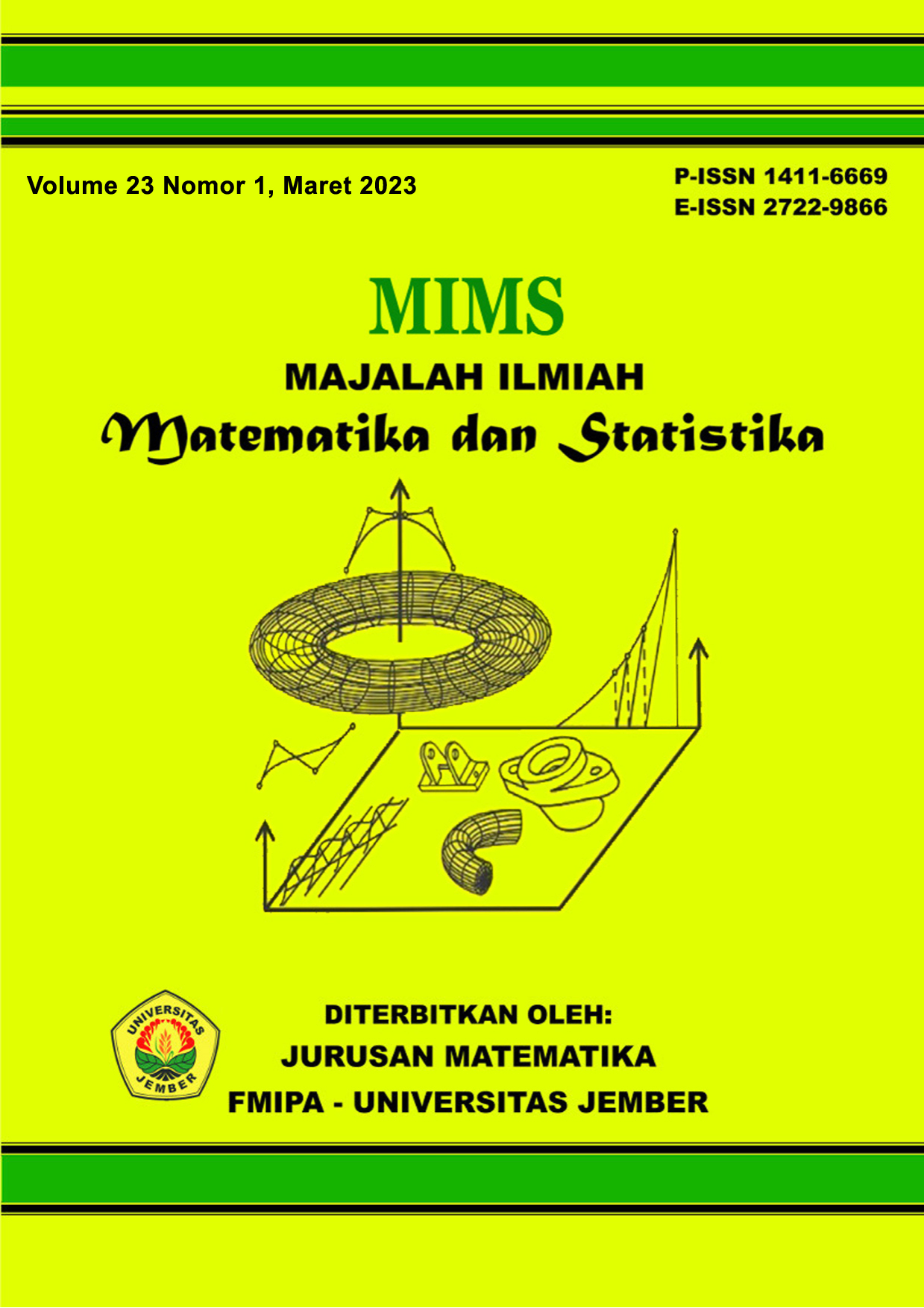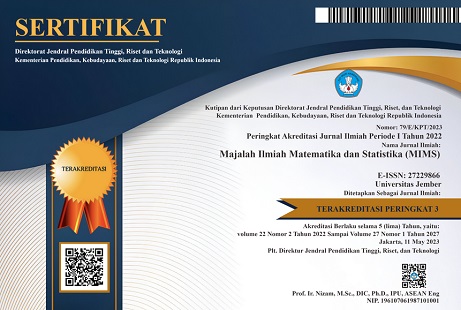Bayes' approach of linear regression to modeling the human development index in Indonesia
DOI:
https://doi.org/10.19184/mims.v23i1.31641Abstract
Regression analysis is one of the data analysis techniques that can be used to examine the correlation between two variables, namely dependent variable and independent variable. It’s can be used to determine the parameter estimation of linear regression models are; the method of least squares or ordinary least square (OLS), Maximum likelihood estimation (MLE), and the Bayes method. Bayes' method defines the parameter as a random variable that describes the initial comprehension of the parameter before the observation was initiated and elucidated in an initial distribution refer as the prior distribution. The prior distribution used in this study is the pseudo prior distribution. The Data used in this study is secondary data, namely human development index (HDI) data in 2020, which was obtained from the website of the Central Statistics Agency (BPS). This study aims to estimate the regression model parameters using the Bayes method on the HDI data and the population data which adepts with information and communication technology (ICT) in Indonesia in 2020. The results of the specimen and analysis showed that population variables with ICT adepts have a significant effect on HDI variables. The results of the determination coefficient showed that 78.42% of HDI variables are affected by the population variables with ICT adepts while the remaining 21.58% are affected by other factors that have not been studied.
Keywords: Bayes method, human development index, information communication and technology, linear regression, pseudo prior.
MSC2020: 62F15








